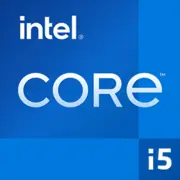Intel Core i5-13600K

インテルコアi5-13600K:包括的なレビューとビルドに関する推奨事項(2025年)
主な仕様:アーキテクチャ、プロセス技術、重要な特徴
Raptor Lakeアーキテクチャ:ハイブリッドアプローチ
インテルコアi5-13600Kプロセッサは、2022年末に発売され、Raptor Lake(コードネーム)アーキテクチャに基づいています。これは、Alder Lakeで紹介されたハイブリッドコンセプトの進化です。このチップは、6つのパフォーマンスコア(Pコア)および8つの効率コア(Eコア)を組み合わせており、合計で14コアと20スレッドを提供します。Pコアは重いタスク(ゲーム、レンダリング)を担当し、Eコアはバックグラウンドプロセスとマルチタスクを最適化します。
インテル7プロセス技術(10nm Enhanced SuperFin)は、エネルギー効率とパフォーマンスのバランスを提供します。周波数は5.1GHzのターボブーストに達し、L3キャッシュは24MBに増加しており、これは前モデルのi5-12600Kよりも20%増加しています。
パフォーマンスの数値
- Geekbench 6:シングルコア — 2660、マルチコア — 14827。
- Cinebench R23:マルチコア — ~24000 pts(Ryzen 7 7700Xと同等)。
- ゲーム(例:Cyberpunk 2077やAlan Wake 2)では、プロセッサは1440pで使用した場合でも最低FPSの低下を示しません(RTX 4070 Tiレベルのグラフィックカード使用時)。
主な特徴:
- PCIe 5.0のサポート(GPU用16レーン+NVMe用4レーン)。
- 統合グラフィックスUHD 770(ディスクリートカードなしでの基本動作)。
- コアの負荷最適化のためのインテルスレッドディレクター技術。
- オーバークロック可能(倍率が解除されています)。
互換性のあるマザーボード:ソケットとチップセット
LGA 1700ソケット:条件付きの汎用性
i5-13600KはLGA 1700ソケットを使用しており、Z790、B760、H770、H710のチップセットと互換性があります。ただし、オーバークロックにはZ790(例:ASUS ROG Strix Z790-E Gaming、価格は約$350)またはB760(MSI MAG B760 Tomahawk、約$180)のマザーボードが必要です。
推奨事項:
- Z790:エンスージアストにとっての最良の選択—オーバークロックサポート、SSD用のPCIe 5.0、Thunderbolt 4。
- B760:基本機能を備えた予算向けオプション。
- H770/H710:オフィスPC用(オーバークロックなし、ポートの制限あり)。
注意! 2022-2023年の一部のマザーボードは、Raptor Lakeとの互換性のためにBIOSのアップデートが必要です。メーカーにサポートを確認してください。
サポートメモリ:DDR4 vs DDR5
プロセッサはDDR4-3200およびDDR5-5600と互換性があります。
- DDR5:帯域幅が高く(作業タスクに重要)、ですが価格が高い(2025年には32GB DDR5-5600が約$120)。
- DDR4:予算向けオプション(2025年には32GB DDR4-3200が約$70)ですが、レンダリングのパフォーマンスを制限します。
実際の例:ゲームではDDR4とDDR5の違いは最小で(FPSで1-5%)、しかしBlenderではDDR5を使用するとレンダリングが8-12%高速化されます。
電源ユニットに関する推奨事項
公式のTDPは125Wですが、オーバークロック時には消費が200Wに達することがあります。
- RTX 4070 Tiとのシステム用:750W(80 Plus Goldの認証を推奨)。
- オーバークロックなしでミドルレンジのGPU:650W。
人気モデル:
- Corsair RM750x(2025年) — $130。
- Seasonic FOCUS GX-650 — $110。
アドバイス:電源ユニットに節約しないでください—電圧の変動はコンポーネントに損傷を与える可能性があります。
プロセッサの利点と欠点
利点:
- ゲームとマルチスレッドタスクにおける高いパフォーマンス。
- DDR5とPCIe 5.0のサポート(将来に向けた余裕)。
- 比較的手頃な価格(2025年には約$280)。
欠点:
- 負荷時の高いエネルギー消費。
- 強力なクーラーが必要(標準のものでは不十分)。
- DDR5はビルドコストを増加させる。
使用シナリオ
ゲーム
トップGPUを使用した1440p/4Kに最適です。RTX 4080とのテスト結果:
- Cyberpunk 2077(ウルトラ、RT) — 85-110 FPS。
- Hogwarts Legacy — 100-120 FPS。
作業タスク
- Blenderでのレンダリング:Ryzen 5 7600Xより15%速い。
- Premiere Proでのビデオ編集:4Kの編集もラグなし。
マルチメディア
流れるストリーミング(OBS + ゲーム)でも、EコアによってFPSを失うことはありません。
競合他社との比較
1. AMD Ryzen 5 7600X($250):
- 利点:エネルギー効率、AM5サポート(長期サポート)。
- 欠点:6コア対14コアで、マルチスレッド性能が低い。
2. インテルコアi7-13700K($380):
- 利点:16コア、より高い周波数。
- 欠点:価格、ほとんどのゲームには過剰。
結論:i5-13600Kは価格とマルチスレッドパワーのバランスにおいて優れています。
ビルドに関する実践的なアドバイス
1. 冷却:
- 最低限:Deepcool AK620のサーマルペースト($60)。
- オーバークロック用:Arctic Liquid Freezer II 360(水冷、$120)。
2. メモリ:予算が限られている場合はDDR4を選ぶべきですが、後でDDR5に移行できるマザーボードを選びましょう。
3. ケース:通気を確保する(3-4ファン)。例:Lian Li Lancool 216($90)。
最終結論:i5-13600Kは誰に適しているか?
このプロセッサは以下のユーザーに最適です:
- ゲーマー:i7/i9に対して過剰支出せずに最大FPSを求める人。
- コンテンツクリエイター(編集、3Dグラフィックス)。
- エンスージアスト:PCIe 5.0 SSDへのアップグレードを考えている人。
なぜこれなのか? 価格、パフォーマンス、新技術のサポートの組み合わせが、2025年でも中価格帯でのベスト選択肢にしています。
基本
CPUの仕様
メモリ仕様
GPUの仕様
その他
ベンチマーク
他のCPUとの比較
関連する CPU の比較
ソーシャルメディアで共有する
または当サイトへのリンクを追加
<a href="https://cputronic.com/ja/cpu/intel-core-i5-13600k" target="_blank">Intel Core i5-13600K</a>

